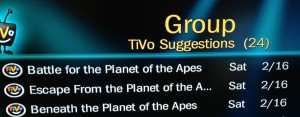As I hurtle towards the inevitable end of the semester, it’s a good time to polish up some of the drafts that have been piling up. Instant content, just add coffee.
Yes. Well.
In my Anthropological Research Design seminar this semester we’ve been, um, designing research. Specifically, ethnographic research. (As a biological anthropologist, this is not something I do often).
I knew I wanted to do something involving Floridians and alligators. I’d read Laura Ogden’s Swamplife: People, Gators, and Mangroves Entangled in the Everglades and her scholarly articles on the cultural and political constructions of nature and the concept of ecosystems but I wasn’t quite sure where to go from there. (Here’s an interview on the Anthropology and Environment Society blog with Ogden about the book – it’s fascinating).
I was flailing about on a Friday night in late February, knee-deep in a literature review, when I decided to take a brief twitter-break. That’s when I saw that uber-scienceblogger Brian Switek had tweeted this::
If cats, “environmental murderizers” that they are, were banned, what animals would people pick as replacements? io9.com/5985751/when-c… @io9
— Brian Switek (@Laelaps) February 21, 2013
My fear of a world where apes evolved from men kicked into high gear and I quickly responded.
@laelaps in planet of the apes replacing cats & dogs w apes (+ adding time travel subplot) caused evolutionary wackiness to ensue ;-)
— Rebecca Gordon (@meanlouise) February 21, 2013
.@meanlouise I had forgotten about that! And kind of surprised @io9 didn’t key into that connection
— Brian Switek (@Laelaps) February 21, 2013
@laelaps @io9 You probably repressed it b/c it made no sense. lol. The storyline-continuity spiral those movies went on…yikes.
— Rebecca Gordon (@meanlouise) February 21, 2013
.@meanlouise @io9 Who needs continuity when you’ve got time travel?
— Brian Switek (@Laelaps) February 21, 2013
Hah! RT @meanlouise @io9 We actually refer to the whole plot arc by it’s scientific name, The Ricardo Montalban Effect.
— Brian Switek (@Laelaps) February 21, 2013
Later I discovered my Tivo, Overlord II, had been trying to give me nudges in the right direction all week:
Amidst all this chatter, and the inevitable branching twitter conversations, I realized I was thinking too narrowly. Reading Ajay Gandhi’s ethnography, “Catch Me if You Can: Monkey capture in Delhi” was a turning point. My ideas were sound, but my theoretical model was all wrong. I don’t think that multispecies ethnography (see references at the end of the post) is really going to be The Next Big Thing, but the possible applications are intriguing.
So the moral of the story: Twitter is not always a waste of time and Tivo is your friend and it just wants to help. Also, beware the Ricardo Montalban Effect, which I still haven’t fully explained but intend to in the very near future. I thought I had an old post explaining it, but I was mistaken. I’ll fix that, but probably not until the semester is over.
In related news, Brian Switek’s new book, My Beloved Brontosaurus: On the Road with Old Bones, New Science, and Our Favorite Dinosaurs, is waiting for you to buy it. It’s pretty great.
_______________
References
Fuentes, Agustin
2010 Naturalcultural encounters in Bali: monkeys, temples, tourists, and ethnoprimatology. Cultural Anthropology 25(4):600 – 624.
Gandhi, Ajay
2012 Catch me if you can: Monkey capture in Delhi. Ethnography (13): 43-56.
Kirksey, S. Eben and Stefan Helmreich
2010 The Emergence of Multispecies Ethnography. Cultural Anthropology 25(4):545-576.
Ogden, Laura
2008 The Everglades Ecosystem and the Politics of Nature. American Anthropologist 110(1):21-32.
